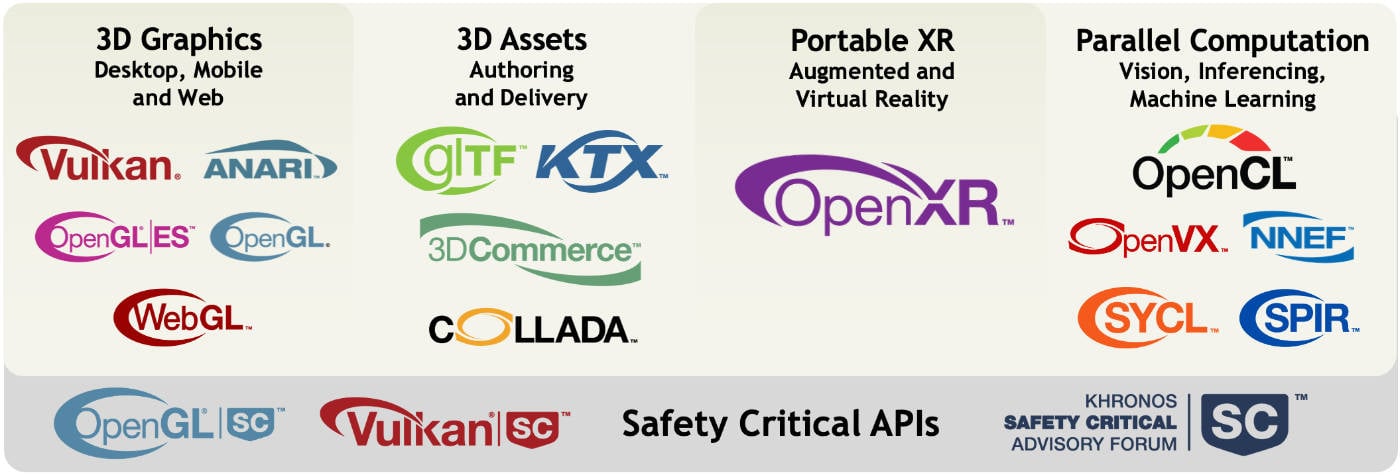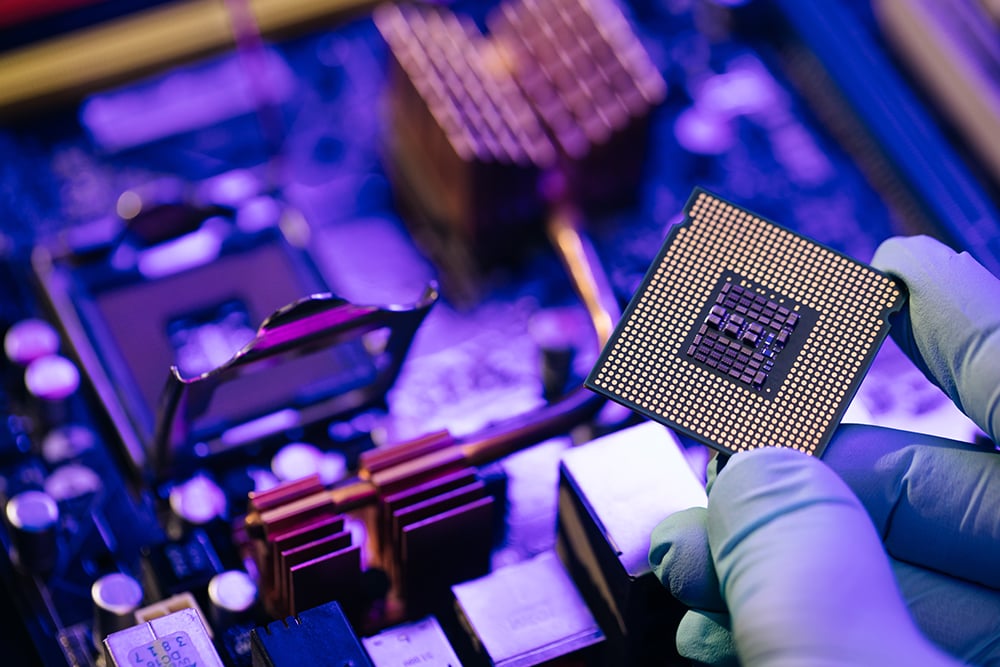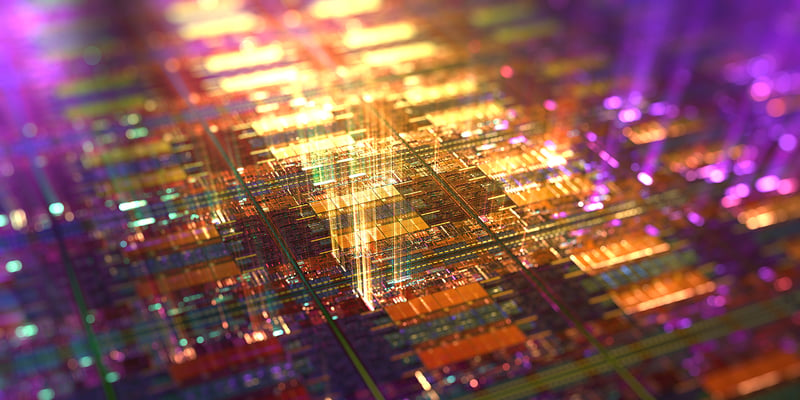
Career Boost: GPU Potential with Open-Source Solutions
- 6 minute read
-
Author: Mobica
Nearly everyone hopes to become an expert or specialist at what they do, but very few people reach those heights. One of the most important factors to consider when working your way to the top of your field is finding an environment where you have access to the best projects, people and information in your domain.
With our Global reach and ever-expanding portfolio of GPU projects, Mobicans have access to all of the above in spades.
Our question to you is; are you looking for a way to jumpstart your career experience in the rapidly growing GPU industry? With Mobica’s GPU affiliations and projects, you can gain valuable experience and showcase your skillset by working on the latest standards in GPU tech.
The emergence of GPU technology
Thanks to our extensive experience working with GPU (Graphics Processing Unit) technology, Mobica has a keen sense of how crucial it is for the whole IT industry. Hence why we invest resources in fostering a great environment for tech talent looking to bolster their GPU technology experience.
The rise of GPU technology began in the late 1990s with hardware vendors competing to provide dedicated circuits for consumers to render high-end 3D graphics games. However, now GPUs are being used for a much broader range of purposes beyond 3D rendering, thanks to their unique capability of performing complex parallel data processing. This makes them ideal for tackling tasks such as machine learning (AI), scientific simulations and image/video processing.
In this article, we will delve into the promising prospects of GPU and analyse the critical role of the Khronos Group and its associated entities in driving standardisation within this field. Additionally, we will gain insight into how CPU and GPU differ from one another, and explore alternative strategies for outsourcing strenuous workloads to dedicated hardware. Subsequently, software solutions for GPU computing shall be discussed with special emphasis on SYCL and oneAPI's contribution to streamlining development processes across varying architectures.
Let’s do this!
Standardisation - The Khronos Group
A unified and standardised API is necessary to bridge the gap between GPU manufacturers and software developers to fully leverage modern GPUs' computing power. Such an API must be compatible across various platforms, widely accepted by application developers, and implemented by hardware vendors in order to ensure maximum efficiency.
In 2000, the Khronos Group was established as an open, non-profit, member-driven consortium that creates and maintains open standards for graphics, media and parallel computing. Comprised of over 150 leading technology companies such as AMD, Google, Intel, NVIDIA, Samsung and Mobica among others, this visionary organisation strives to foster innovation in multiple industries by providing a platform for collaborations between groups of experts.
The Khronos Group seeks to create a unified, royalty-free ecosystem of standards for 3D graphics and parallel computing. By creating protocols such as OpenGL, Vulkan, OpenCL, and SYCL, they foster an environment where developers can construct cutting-edge applications that can function across multiple hardware platforms.
Most notable Khronos' standards:
Open GL
OpenGL is a powerful open standard, providing developers with an expansive cross-platform API for creating 3D visuals that can be executed on multiple types of hardware. Despite being superseded by Vulkan, OpenGL remains vital to many industries.
Vulkan
Vulkan is a revolutionary, open-source 3D graphics and compute API that provides unparalleled access to the powerful resources of today's GPUs. It is the next generation of OpenGL, enabling developers to unlock the full potential of their hardware with a low-level cross-platform interface.
Open CL
OpenCL provides an efficient, portable programming model and runtime system for high-performance application development, enabling developers to write code once and execute it on multiple hardware platforms. Ideal for high-performance application development.
SYCL
SYCL (an acronym for "sickle") is an open standard and programming model empowering developers to utilise (a superset of) C++ to create parallel computing software that can be executed on a wide range of hardware accelerators, including GPUs, CPUs and FPGAs. Originally, the specification outlined that a SYCL implementation should employ OpenCL as its runtime environment for the offloading workload. While this requirement has been scrapped from the specification, it remains evident that both OpenCL and SYCL share many features and objectives. In comparison to SYCL, OpenCL can be thought of as a run-time environment which offers a more granular API to developers, granting them greater control over their programs at the expense of supplemental boilerplate code.
SPIR-V
SPIR-V, or Standard Portable Intermediate Representation, is a binary format for representing shader code that can be executed on different types of hardware accelerators (including GPUs). Shader (in this context) is usually a small computer program that is executed on a GPU’s core. Back in the day, such programs were used only for a process called shading - to calculate the appropriate levels of light, darkness, and colour during the rendering of a 3D scene. Still, shading is a vital part of any graphics rendering pipeline but shaders can also be used to perform non-graphics calculations (known as compute shaders). SPIR-V can be considered a common language used to program any GPU independent of the vendor.

Standards established and maintained by the Khronos Group. Source: https://www.khronos.org/assets/uploads/about/Khronos-Standards-about-us_May21.jpg
Mobica's input to the GPU industry
Mobica has been at the forefront of innovation in graphics technology, having spearheaded the establishment of Vulkan in collaboration with the prestigious Khronos Group back in 2015.
As a company, we are devoted to providing top-notch solutions for the GPU industry, by leveraging our active membership within the Khronos' OpenCL and Vulkan working groups; where our experts work alongside peers from around the world to set standards for this ever-evolving sector.
GPU Development Services at Mobica
Our comprehensive services in GPU development encompass; driver development, creating specialised software that facilitates seamless communication between operating systems and graphics hardware, as well as Compatibility Test Suite creation for Vulkan and OpenCL. Mobicans also offer their expertise to further the advancement of open-source software within Khronos, contributing to projects such as Vulkan-Samples, OpenCL-SDK and OpenCL C++ when not engaged with commercial assignments. All contributions can be found on Khronos' Github repositories.
As an added bonus, Mobicans can attend conferences, and be actively involved in events and gatherings within the graphics space.
Why GPU became critical to the emergence of HPC and AI systems?
If we take a look at a consumer-level CPU, for example, Intel Core i7-12700K and compare it to a GPU with the same price tag like NVIDIA GeForce RTX 2060 we can see an obvious difference in the architectures of both: the GPU has over 2000 cores (1920 CUDA cores and 240 Tensor cores) and the CPU can handle 20 threads (with 12 physical cores + Hyper-Threading). Parallelism is in the DNA of graphics cards. Moreover, even consumer-class GPUs have already built-in cores designed to handle AI-related operations (Tensor cores).
Considering the above, GPUs in domains such as machine learning, analytics and data science, and cryptocurrency mining come out on top. This is because these fields require heavy parallel computing and data throughput capabilities, which are where GPUs excel. Additionally, the architecture of GPUs provides greater flexibility in evolution, because internal architecture and ISA can be changed anytime as long as the driver can translate an intermediate code (like SPIR-V) to native graphic card bytecode. This works differently for CPUs where ISAs are standardised and any change in its architecture requires a long chain of adaptations in the software stack.
Despite the strengths of GPUs, CPUs still have a crucial role to play in computing. While they may not match the parallel computing power of GPUs, CPUs are essential for general-purpose computing tasks. Both CPU and GPU fit together in a computer system to provide a well-fitted, high-performance computing set.

Where is the industry headed in 2023?
In this article, we have alluded to the use of hardware accelerators such as 'GPU' and 'FPGA', which enable the offloading of intense computational tasks from the CPU core onto dedicated hardware. This approach is immensely advantageous in carrying out processes requiring cryptography, compression/decompression, network routing and parallel computing (GPU). In recent years, there has been a surge in the number of new accelerator devices being released on the market. Consequently, we are now presented with an array of choices when it comes to accelerating intensive computing workloads.
Cloud computing has been widely used for almost two decades, with major cloud providers offering dedicated GPU hosting to satisfy the demand for deep learning and high-performance computing (HPC). A trend that is becoming increasingly apparent is that GPU manufacturers - whose revenue streams have traditionally leaned heavily toward gaming - are putting greater emphasis on GPU production for data centres. Fun Fact: Nvidia’s A100 GPU can’t natively render 3D graphics and is specifically designed for parallel computing.
The community and Khronos Group with its members are putting effort to make parallel computing heterogeneous and based on open standards. This is contrary to proprietary solutions provided by GPU vendors that often come with vendor lock-in. We can see the spread of open solutions that try to answer the need for open parallel computing toolkits. Khronos’ SYCL provides a standardised high-level programming language model based on C++17 with multiple implementations: DPC++, ComputeCpp or OpenSYCL.
To simplify application development across various accelerators (like CPUs, GPUs, and FPGAs) oneAPI has been developed as a framework. One of the programming models that oneAPI supports is SYCL, which allows developers to write code once and then deploy it across a range of devices, thereby enhancing productivity and performance.
In conclusion, GPUs remain important to parallel computing tasks, while CPUs are essential for general-purpose computing. With the advancement of cloud computing and GPU manufacturers now dedicating more resources to data centre production, it is clear that this trend will continue well into 2023 and beyond. Furthermore, open standards such as SYCL offer developers the ability to write code once and deploy it across devices, bringing with it enhanced productivity and performance.
2023 promises to be an exciting year for computer hardware and we are at the forefront of it, so consider joining us on our exciting GPU journey at Mobica. Get in touch and start making an impact with Mobica asap!
Are you ready to make your own contribution?
Get started with Mobica today!
Contributor:
Oskar Płaska
Technical Domain Manager in Linux, Embedded Competence Centre at Mobica

Oskar has been a driving force of innovation at Mobica for 9 years, leading R&D activities, providing technical analysis and exploring market trends to push the boundaries of our Embedded Competence Centre.
Throughout his career, he has demonstrated strong technical leadership skills and expertise in software development using C, C++, Python and assembler within the silicon and automotive sectors.

